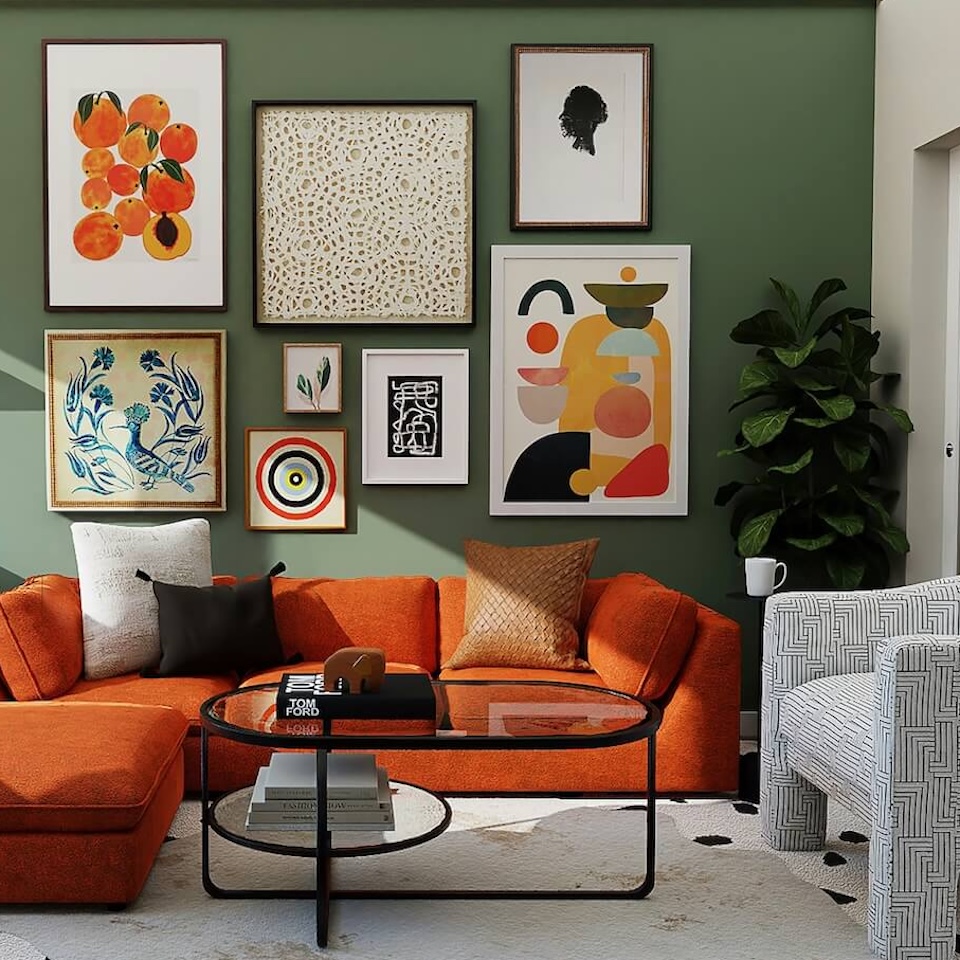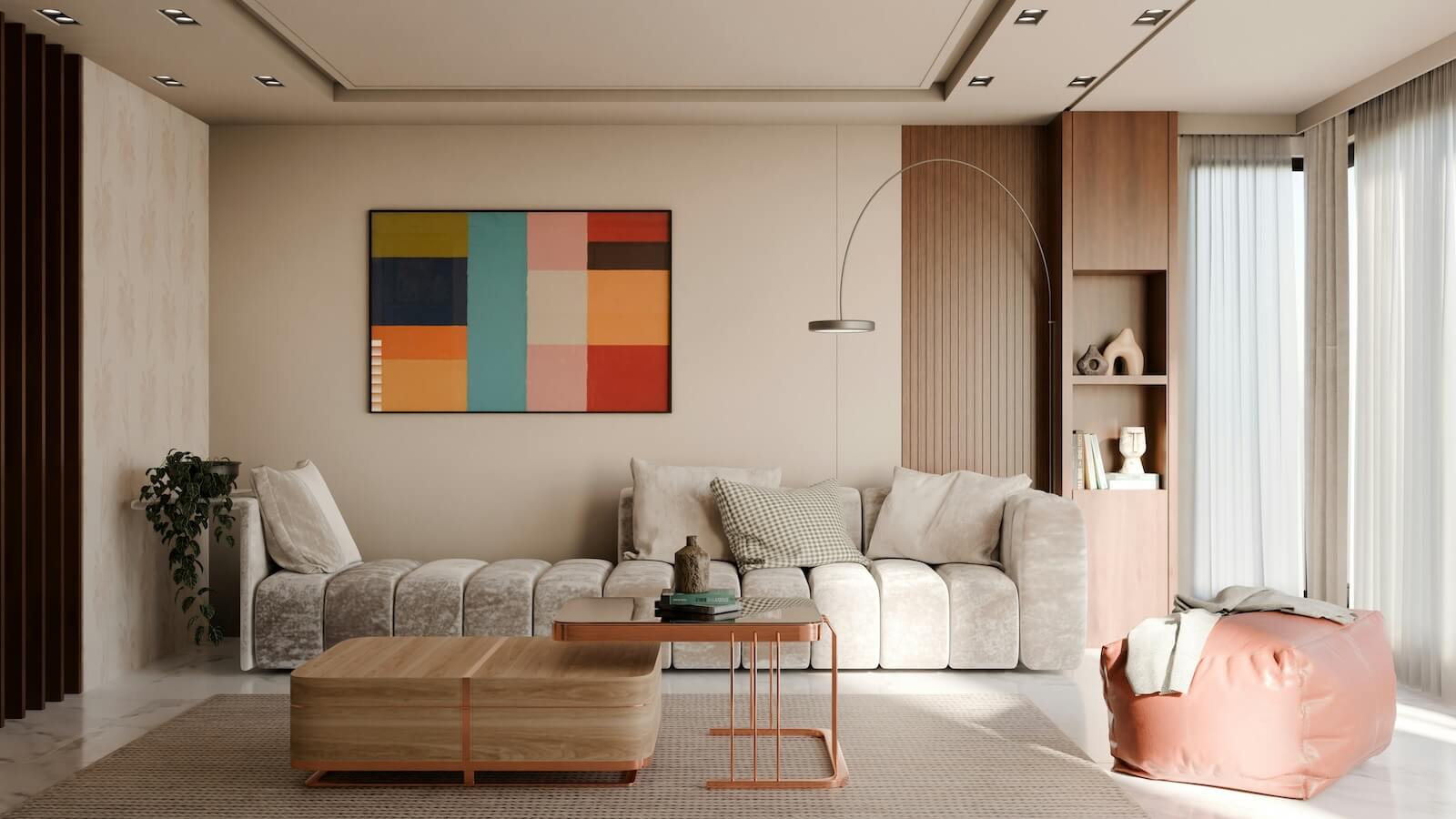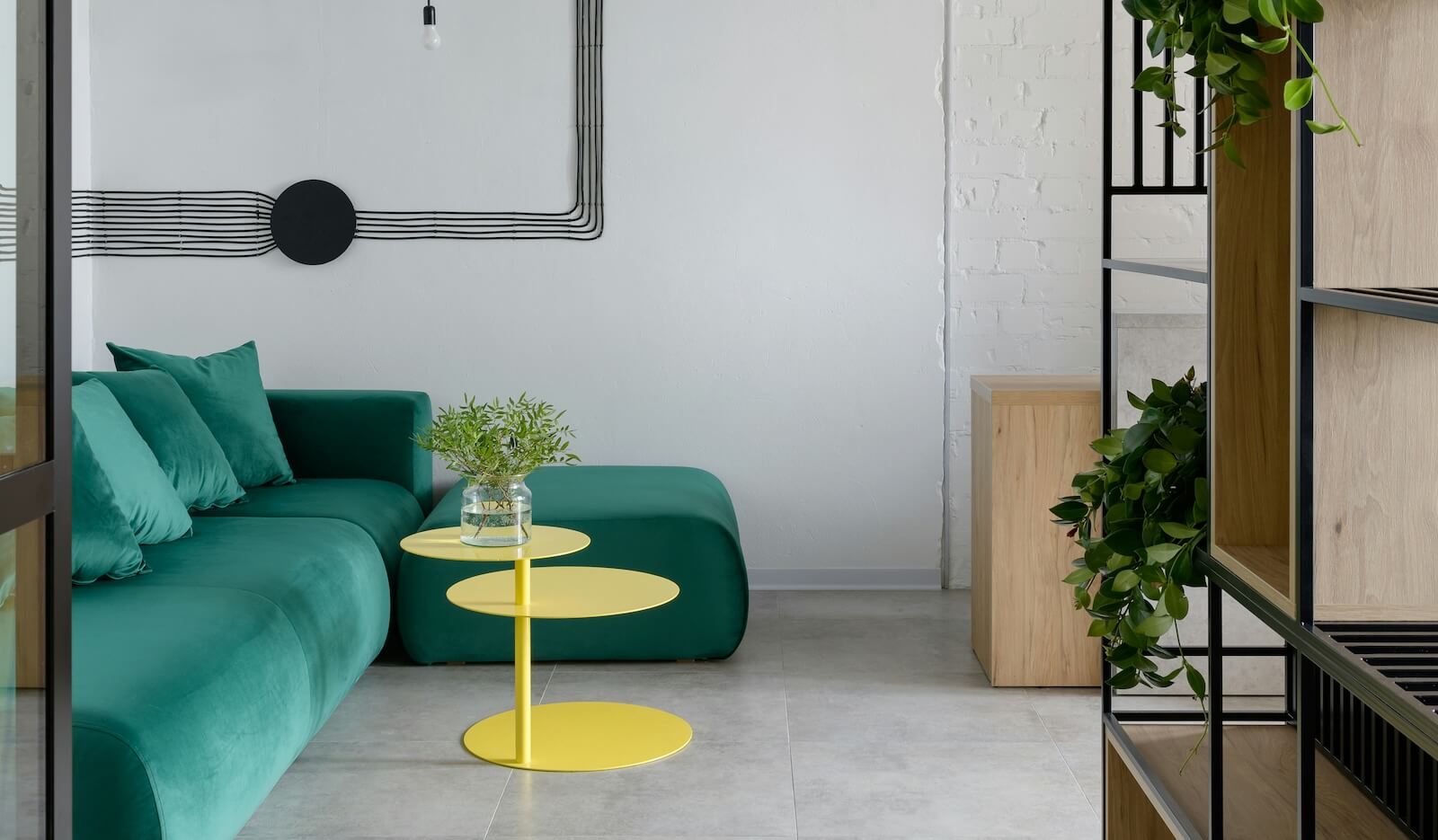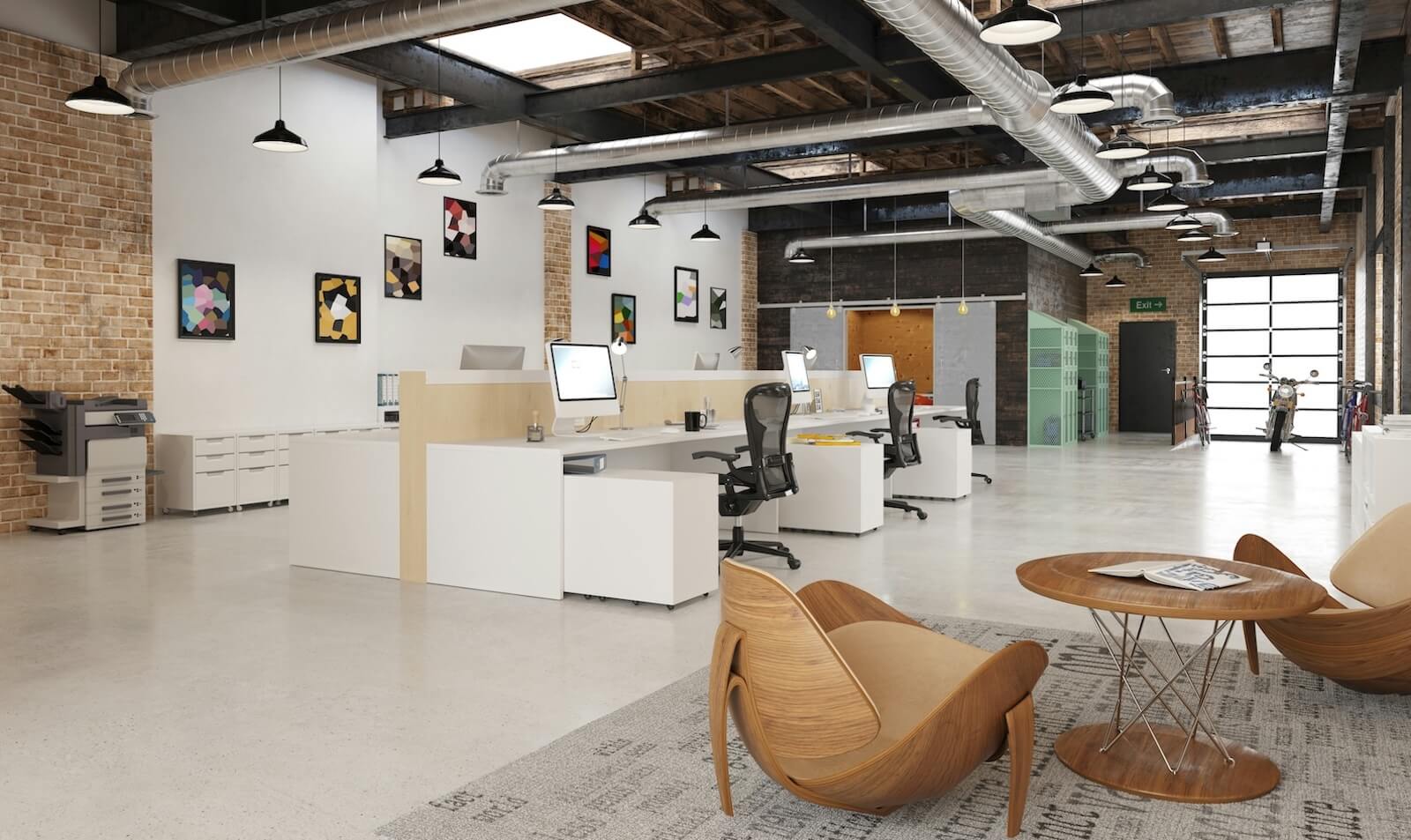When planning an office fit out, many business owners and commercial landlords find themselves confused about the difference between decoration and interior design.
In fact, many people don’t even realise they’re confused about this because they aren’t aware that there’s an important distinction to make.
While these terms are often used interchangeably, understanding their fundamental differences is essential for creating a workspace that not only looks great but also functions effectively for your team’s productivity and wellbeing.
In this blog post, we explore the key differences between interior design and interior decor, including:
- Skillset and specialist education
- Function versus aesthetic
- Regulation and compliance
- Project scope and budget
We also share advice on understanding design language and making the right choice between full interior design and decor for your project.
Office interior design vs. decor
Interior design and decoration encompass two different approaches to transforming workspaces, each with its own benefits and each requiring unique skills and qualifications.
- Interior design – This is the deep and strategic planning and execution of functional spaces that prioritise safety, accessibility and user experience. It incorporates more structural elements, including Shell & Core, Cat A and Cat B fit out.
- Decorating – This focuses mainly on enhancing the aesthetic of an existing space through furniture, colours, lighting and decorative accessories. At this stage, the structural elements of the space are complete and the design configuration is already in place.
The confusion between the two often happens because both have an impact on how the space looks visually and how it feels in terms of style. However, the processes, education requirements and professional responsibilities involved in interior design versus decoration differ significantly.
According to the British Institute of Interior Design (BIID), many UK businesses underestimate the complexity involved in professional interior design. This leads to business owners treating comprehensive office fit out or refurbishment projects as simple decorating projects.
This misunderstanding can lead to costly mistakes as budget expectations aren’t aligned. It also means workplace issues can be left unresolved as the solutions aren’t sufficient. Redecorating an office space, for example, won’t address the problem of poor cross-team collaboration.
Education and professional training
One of the main differences between interior design and interior decoration is the expertise and education of the specialists doing it.
Interior designers go through extensive training in architectural principles, building codes, and space planning, for example, while decorators are skilled in specific aesthetic elements and styling techniques.
Professional interior designers typically complete formal education programmes covering things like:
- Architectural drawing
- Construction methods
- Building regulations
- Human and environmental psychology
- Lighting design
- Acoustics
- Materials
These qualifications allow them to create things like:
- Detailed technical drawings
- 3D space renders
- Structural limitation guidelines
- Health & Safety compliance guidelines
Statistics show that enrollment in interior design degree courses has increased by almost a quarter (23%) over the past five years.
Interior decorators, on the other hand, focus mainly on things like:
- Colour theory
- Furniture selection
- Styling principles
Professional qualifications in these areas are mostly picked up through shorter courses, apprenticeships or practical hands-on experience.
Functional planning vs look, feel and aesthetic
Another key difference between interior design and interior decor is the strategy and planning behind the project. Designers consider the function of the physical environment (i.e. how it will be utilised) more than decorators who focus their attention more on the look and feel of the space.
Interior designers begin projects by analysing how spaces will be used, considering factors like:
- Workflow patterns
- Unique workplace issues
- Accessibility requirements
- Long-term business needs
- Traffic and footfall
- Ventilation systems, etc
- Lighting needs
They can then create detailed floor plans and make calculations based on these factors. They can also apply ergonomic office design principles and environmental best practices to positively impact workplace performance.
The expertise of an interior decorator comes in design-based decisions such as:
- Furnishing
- Artwork, prints and other wall decor
- Wallpaper
- Paint choices
- Rugs, cushions and other soft accessories
- Fabric selection
- Accessory lighting
- Space dressing
This will typically happen within existing space layouts rather than when restructuring or fit out of spaces is taking place.
Regulatory knowledge and compliance
Office fit out projects need to comply with various different rules and regulations, such as:
- Construction Design and Management Regulations
- Building Regulations Approved Documents
- The Equality Act
- Health & Safety Standards
Trained interior designers receive training in these kinds of legal requirements and understand how to navigate complex approval processes. This means they can help businesses avoid pitfalls and penalties through their expert understanding of accessibility standards, fire safety requirements and building code compliance, etc.
Decorators, while knowledgeable about aesthetic considerations, typically lack the technical training required to address these regulatory complexities.
That’s why, in office refurbishment projects requiring structural modifications or system installations, you would lean on an interior design-led partner, not just a specialist space decorator.
Project budget and scope
Interior design projects usually come with a higher upfront cost, but they’re built to last and are designed to boost functionality and efficiency in the long-term.
Decorating projects, on the other hand, are generally easier on the budget. However, they may need refreshing or updating more regularly. In fact, industry research shows that decorative elements often need a revamp every 3-5 years, while a strong interior design scheme can stay functional for 10-15 years with just a few tweaks here and there.
Knowing the cost differences upfront helps businesses choose the right fit out strategy. If your project involves structural changes, compliance requirements or tech upgrades, working with an interior designer is usually the smarter move. If you’re mostly after a visual update, a decorating service might be all you need.
Making the right move for your business
Choosing between interior design and decorating services depends on the scope of your project (i.e. the level to which you want to transform your space) and how much you’re looking to spend.
Extensive office refurbishment and fit out involving layout changes, compliance updates or new workplace tech integration require interior design expertise. However, less extensive projects focused on refreshing existing spaces with new furniture or colour schemes are more of a decorating job.
When working with the Penketh Interiors team, we always recommend conducting a thorough needs assessment before deciding on your approach.
During your space audit, consider factors such as:
- Workforce growth projections
- Technology requirements
- Accessibility needs
- Budget limitations
This kind of evaluation will help you determine whether your office fit out requires the expertise of an interior designer or an interior decorator.
Read more: The benefits of partnering with an office fit out specialist >>
By choosing the right approach for your office fit out project, you create an environment that not only looks impressive but also supports your team’s productivity, wellbeing, and long-term business success.
Looking for support with your workspace audit and analysis? Get in touch to learn more about how our experts can help.









